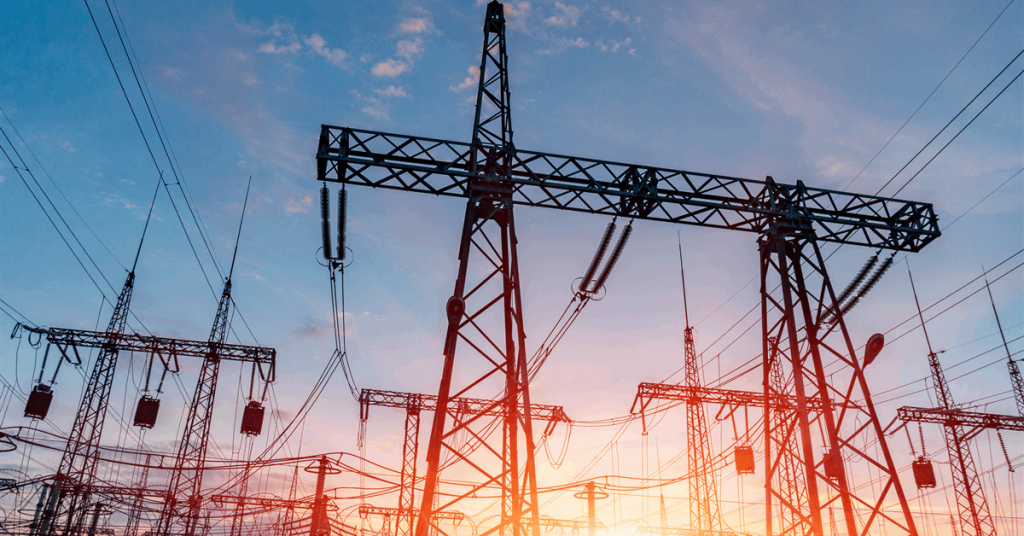Scottish Power Ltd has received consent from the South Lanarkshire Council to build a 400-kilovolt (kV) substation near the former Red Moss Hotel to enable more renewable power into the grid.
The utility, through SP Energy Networks, will now engage with the council’s roads department to confirm details around site access from the road network and develop a construction management plan, ScottishPower said in a press release.
It hopes to start construction later this year and complete the project by 2031, subject to these conditions and other site survey activities.
“Much of the electricity transmission network in Scotland was first built in the 1920s. Since then, it has grown and evolved to meet industrial needs and serve the expanding population, but the network in the south of Scotland will soon be at full capacity”, ScottishPower, part of Spain’s Iberdrola SA, said. “Around two gigawatts of new renewable energy is expected to connect to the transmission network in this area in the near future.
“The new high-voltage substation at Redshaw is essential to create sufficient extra network capacity and improve the resilience of the local energy network”.
The project consists of a 400-kV gas insulated switchgear (GIS) substation building, which will house gas insulated electrical switchgear and plan; a second GIS substation building; a small distribution substation building to provide ancillary power, lighting, heating and ventilation; and four 360MVA transformers.
“The new substation is part of a wider program of investment across Scotland vital to improving our energy security and contributing towards Scotland’s, and the rest of the UK’s, net zero targets”, said SP Energy Networks environmental planning manager Andrew Hutchison.
The United Kingdom has been allotted the biggest chunk, totaling EUR 20 billion ($23.21 billion), in Iberdrola’s recently updated 2024-28 investment plan of EUR 58 billion.
“This plan aims to transform Iberdrola’s profile into a more regulated company, with networks as a vector for growth”, executive chair Ignacio Galan said in an online statement September 24.
“We will invest EUR 58 billion by 2028, two-thirds of which will go to transmission and distribution networks, mainly in the United Kingdom and the United States”.
Sixty-five percent of the total investment will go to regulated networks, Iberdrola said.
Distribution has been allocated EUR 25 billion. Transmission gets EUR 12 billion, 95 percent of which is meant for the UK and the United States.
“Generation and customers” get EUR 21 billion, 75 percent of which comprises projects under construction. Of the EUR 21 billion, 38 percent is for offshore wind, 24 percent for onshore wind, 10 percent for solar and 10 percent for storage.
The U.S. has been earmarked the second-largest chunk after the UK with EUR 16 billion. Iberia gets EUR 9 billion and Brazil EUR 7 billion. Other European Union markets and Australia get a total of EUR 5 billion.
Eighty-five percent of total investments are meant for “A-rated countries with stable, predictable and attractive regulatory frameworks”, Iberdrola said.
To contact the author, email jov.onsat@rigzone.com
Generated by readers, the comments included herein do not reflect the views and opinions of Rigzone. All comments are subject to editorial review. Off-topic, inappropriate or insulting comments will be removed.
element
var scriptTag = document.createElement(‘script’);
scriptTag.src = url;
scriptTag.async = true;
scriptTag.onload = implementationCode;
scriptTag.onreadystatechange = implementationCode;
location.appendChild(scriptTag);
};
var div = document.getElementById(‘rigzonelogo’);
div.innerHTML += ” +
‘‘ +
”;
var initJobSearch = function () {
//console.log(“call back”);
}
var addMetaPixel = function () {
if (-1 > -1 || -1 > -1) {
/*Meta Pixel Code*/
!function(f,b,e,v,n,t,s)
{if(f.fbq)return;n=f.fbq=function(){n.callMethod?
n.callMethod.apply(n,arguments):n.queue.push(arguments)};
if(!f._fbq)f._fbq=n;n.push=n;n.loaded=!0;n.version=’2.0′;
n.queue=[];t=b.createElement(e);t.async=!0;
t.src=v;s=b.getElementsByTagName(e)[0];
s.parentNode.insertBefore(t,s)}(window, document,’script’,
‘https://connect.facebook.net/en_US/fbevents.js’);
fbq(‘init’, ‘1517407191885185’);
fbq(‘track’, ‘PageView’);
/*End Meta Pixel Code*/
} else if (0 > -1 && 76 > -1)
{
/*Meta Pixel Code*/
!function(f,b,e,v,n,t,s)
{if(f.fbq)return;n=f.fbq=function(){n.callMethod?
n.callMethod.apply(n,arguments):n.queue.push(arguments)};
if(!f._fbq)f._fbq=n;n.push=n;n.loaded=!0;n.version=’2.0′;
n.queue=[];t=b.createElement(e);t.async=!0;
t.src=v;s=b.getElementsByTagName(e)[0];
s.parentNode.insertBefore(t,s)}(window, document,’script’,
‘https://connect.facebook.net/en_US/fbevents.js’);
fbq(‘init’, ‘1517407191885185’);
fbq(‘track’, ‘PageView’);
/*End Meta Pixel Code*/
}
}
// function gtmFunctionForLayout()
// {
//loadJS(“https://www.googletagmanager.com/gtag/js?id=G-K6ZDLWV6VX”, initJobSearch, document.body);
//}
// window.onload = (e => {
// setTimeout(
// function () {
// document.addEventListener(“DOMContentLoaded”, function () {
// // Select all anchor elements with class ‘ui-tabs-anchor’
// const anchors = document.querySelectorAll(‘a .ui-tabs-anchor’);
// // Loop through each anchor and remove the role attribute if it is set to “presentation”
// anchors.forEach(anchor => {
// if (anchor.getAttribute(‘role’) === ‘presentation’) {
// anchor.removeAttribute(‘role’);
// }
// });
// });
// }
// , 200);
//});

